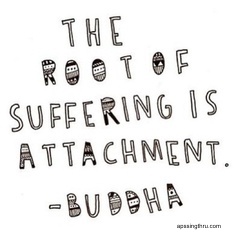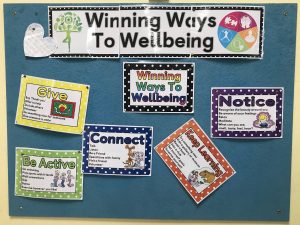Mindfulness is the practice of applying awareness to the present moment through sense-based experience rather than thought. In other words, the ability to bring attention to what is happening right now, without imposing judgments on the quality or meaning of the experience. In practicing mindfulness, sportspeople are able to notice thoughts as passing mental events that don’t require action. The ability to observe in this way can lessen the reflex response to a situation and increase the ability to respond in a calmer more objective way.
We often remember the sporting outbursts (John McEnroe, Zinedine Zidane to name but a few) where players are overcome with rage, feelings of injustice or unfair treatment, or respond negatively to crowd interference. With athletes not only needing to consistently turn in their best performance, but also being role models for fans and aspiring young people, changing the way individuals react to thoughts is a growing area of focus in sports.
A Chosen Response
It is not just the one-off outbursts that sportspeople have to contend with; performance anxiety is a large factor whether you are a team player or individual athlete. So how can mindfulness help? Mindfulness can help individuals become aware of their thoughts, bodily sensations and environment. Through noticing as an observer what is happening in the present moment, we can choose to respond in a certain way instead of relying on the reflex, learned response that often isn’t the most helpful.

We can choose to notice the environmental conditions and make adjustments to our play. We can notice how certain scenarios cause tension in the body and we can choose to relax those parts of the body. Or, we can just notice as an observer and watch the feelings or thoughts arise and pass away – they are mental events that don’t necessarily need a reaction; especially where the thoughts are unhelpful or negative or likely to elicit a negative response. Sport can be a very stressful environment. Mindfulness can help individuals to let go of emotional responses and instead help them to act with more balance and wisdom; this could be the difference between winning and losing.
Improving Focus
Often in competitive sports (professional and amateur) it’s easy to ruminate on past mistakes or predict an outcome before the performance has even started. Mindfulness brings us back to the present moment – what is happening right now? By focusing only on what is happening in the moment, thoughts of predicted failure or learned reactions to past events start to lose their power. Our minds and bodies find a freedom to perform in the moment.

As an amateur competitive cyclist, I have felt and witnessed performance anxiety and the effects it can have on the enjoyment and outcome for individuals. It’s easy to slip into the mental cycle of berating yourself for not doing well, or having moments of self-doubt. Mindfulness might not stop these moments, but it will teach you how to observe them purely as mental events and not based on the reality of the moment. Bringing yourself back to the present and anchoring attention on your breath is a powerful practice to overcome attachment to negative thought patterns. Trying a simple breathing practice before an event can reset the mind and body to be able to focus productively on the current situation.
Positive Imagery
Mindfulness is a powerful method for creating space in the mind which can then be used to meditate on positive visualisations. Utilising the senses can affirm visualisations bringing them to life with vividness that can overcome anxiety and negative thought patterns. Creating a positive mental image of a shot, play, race or outcome can help increase confidence and focus making mindfulness an essential practice not only for success, but also for enjoyment.

Practicing mindfulness is mental training that helps refocus awareness so that attention can be redirected purposefully to help you perform to the best of your ability. As with all training, it is a process that requires commitment and repetition. Mindfulness begins with a sitting practice and deliberate times set aside for mindful enquiry. This then moves on to mindful movement and can become a whole of life practice that can be utilised on the court/pitch/field/track before, during and after performances.
The Well Nest could help your sports team to improve performance through the practice of Mindfulness. To learn more about mindfulness, tailor a mindfulness package for your club or team or to register for mindfulness courses in Staffordshire (suitable for everyone, not only athletes) take a look at the Mindfulness pages or contact [email protected]
Letting go of the past
Letting go of the past will be an issue for most people at some point in their lives. We can all remember hurtful things that were said to us decades ago, or bad experiences that we (knowingly or unconsciously) allow to affect our future experiences. I think we would all agree that being able to let go of the past would provide us with more space in our minds and more peace in our lives.
So how do we do it? It comes back to basic mindfulness principles of being in the present moment, using an anchor to keep us there and staying intentionally and without judgment.
Something that should help us gain some perspective on letting go is that the past has already been and gone; it has been let go of already. What our mind is holding onto is attachment to an event, thought, experience or occurrence from the past. It’s that attachment that stays with us and effects our mind over and over again. When we go into the ruminative state, we run the past (or an imagined future) over and over in our minds. Neither the past nor the future exist; it’s just our thoughts that disturb the mind.

If we repeatedly bring ourselves back to the present moment, our mind will start to learn not to dwell in the past and slowly we will let go of attachment or harmful/negative thought patterns that seem to have power over us. One of the best anchors that we can use in our practice of letting go is the breath. It’s always with us and accessible at any time. Bringing awareness to the breath frees the mind from the past and brings it immediately into the present moment. A simple breathing meditation can be used any time, any place and can provide immediate relief from unhelpful thoughts based on the past. By being in the present moment, we are forced to let go immediately of our attachment to the past. The process won’t be easy and it will take time to be free from attachment to the past for longer than a few moments, but practising bringing ourselves back to the present moment will train the mind to let go.
If the breath doesn’t work for you, or your thoughts prove a stronger anchor than observing the breath, you can try a sense based mindfulness practice; using what you hear, see, smell, feel etc in the environment at that moment to keep you in the present.
Using mindfulness to break down attachment stems from Buddhist teachings and practices that have worked for providing mental calm and clarity for many hundreds of years. The Buddhist tradition that I follow very much focuses on making Buddhist teachings practical and accessible for the modern world. Applying traditional mindfulness techniques in practical ways means the application of this ancient knowledge is relevant to helping us solve our modern problems.
Try something old; to find something new.
Winning Ways to Wellbeing
I visited a primary school in Warwickshire recently and was pleased to see a display promoting wellbeing through 5 practical steps that are now promoted as basic steps to wellbeing all over the world. The ‘5 ways to wellbeing’ outline simple steps that we can all take to improve our wellbeing and are now advocated by the NHS in order to help people actively take control of their wellbeing. Starting small and building to a holistic approach to wellbeing can help us lessen or avoid more long-term conditions such as depression or anxiety that can effect physical and mental health for many years.
But what is wellbeing exactly? What are we trying to improve? Undoubtedly our mental health and states of mind, but wellbeing is a whole of life experience. An improvement in our overall quality of life and experience through practical, active steps to increase our levels of enjoyment, self-worth, physical and mental health and interactions with others.
This sounds like a big challenge, right? Definitely. But luckily the 5 ways to wellbeing really do work and are a great start to improving wellbeing.
The 5 Ways to Wellbeing
- Connect – There is strong evidence that being around others (friends, family, social groups) not only increases our all-round wellbeing, but also increases our longevity. Talking is the best therapy. You don’t have to share everything with others; start small. Make a meaningful connection instead of living in the digital world all the time. When you ask someone how they are, actually listen and pay attention to the answer. Speak to a stranger or make conversation while waiting in a queue. Try car sharing with a colleague; they might even become a friend.
- Be active – We have all read the decades of evidence that shows being physically active improves our mental health…so why do we still doubt it? Because it’s not easy to get active and stay active. But it’s not hard either. There are small changes we can make on the way to becoming more active and improving wellbeing. Take the stairs instead of the lift. Take a class after work with colleagues or organise a new sporting activity for all work colleagues to try. Go for a walk at lunchtime. Get off the bus a stop earlier and walk to your destination. If you feel like more of a challenge, take up a regular class that is proven to aid concentration, inner peace and help sleep…yoga is the obvious.
- Take notice – The basics of mindfulness; notice your surroundings. Be present in the moment and just ‘be’ instead of always ‘doing’. The only moment that exists is right now, so try to pay more attention to what is really going on instead of living in your head thinking about what has already happened or what might happen. Being mindful increases our awareness and knowledge of the self. If we know what we spend our time thinking about, we can start to change our thought patterns for the better. Living mindfully is a difficult task for the novice, but we can all try small steps. Choose a mindfulness cue; a sound or sight that whenever you hear/see it reminds you to take 60 seconds to be mindful and notice what’s going on in the environment.
- Keep learning – Not only is the mind kept active, but there is the chance for social interaction, being mindful and being active all rolled into one here. Continued learning can enhance self-esteem, motivation and can help you to prioritise goals and your own happiness. This doesn’t have to be a formal class to count as learning. You can try learning a new word each day, try reading the news in a foreign language, listen to classical music, join a book club.
- Give – By giving to others we develop our compassion which in turn increases our compassion for ourselves. Engaging in acts of kindness helps us to gain perspective on our own internal struggles and gain an understanding of the greater good. Giving your time, expertise or just random acts of kindness to others can greatly increase your wellbeing and decrease your attachment to seeking happiness through material gain.
A challenge…
I challenge you to try the 5 Winning Ways to Wellbeing for one week and track how you feel in body and mind. Leave a comment below about your experiences and check back to see my review of a week of Winning Ways to Wellbeing.


